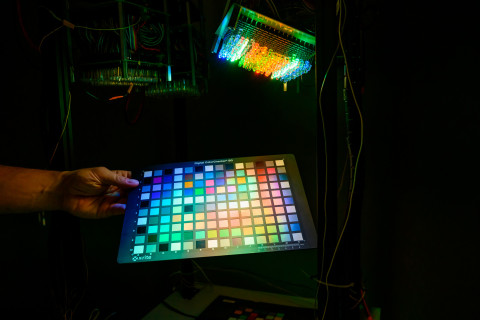Erasmus Mundus programme brings together European universities and global research and business partners in a unique way.
The international Master’s programme COSI, Computational Colour and Spectral Imaging, is a unique degree programme in the field of colour science, where students learn imaging, the properties of light, and the processing of colour and spectral images.
At the same time, the COSI programme is one of the longest-running Erasmus Mundus programmes, organised regularly since 2008. The consortium consists of the European universities, the Norwegian University of Science and Technology (NTNU, as the consortium leader), the University of Eastern Finland (UEF), the University Jean Monnet (UJM), and the University of Granada (UGR), as well as several academic partners and international companies. At the University of Eastern Finland, the School of Computing and the Department of Physics and Mathematics are involved in the COSI programme.
“The COSI consortium is very international, and the programme has global business connections. The programme also has country-specific special scholarships that bring students from a wide range of countries to the programme”, says Professor Markku Hauta-Kasari from the School of Computing at the University of Eastern Finland.
During the two-year Master’s programme, students get to learn about different universities. All students start their first autumn semester at the NTNU university in Norway. In the spring, half of the students continue their studies at the University of Granada in Spain and half at the Jean Monnet University in St. Etienne, France. In the autumn of the second year of the programme, the students are distributed half-half to continue at the University of Eastern Finland and at the NTNU university in Norway. In the last spring semester of the Master’s programme, the students do their theses at universities or companies.
The COSI Master’s programme provides students with good skills in colour measurements, image processing, image analysis, as well as team and project work skills.
“The programme is suitable for anyone interested in colour science and technology. Computational methods are also an integral part of the studies, whereby students learn to understand modern neural networks and other data science skills. Experts in the colour field are a sought-after workforce. A large part of the students find employment in companies, and some proceed to doctoral studies,” says Hauta-Kasari.




